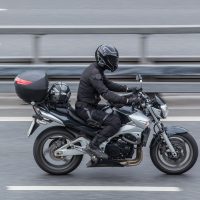Motorcycle Safety Laws You Should Know About

Riding a motorcycle in California offers a unique sense of freedom and exhilaration. Yet like anything else worth doing in this world, riding a bike is not without risks. While you can’t always protect yourself from other negligent, reckless or aggressive drivers, California has several laws on the books designed to promote motorcycle safety. Read on as we discuss these laws below. If you or a loved one has been hurt in a motorcycle accident in the Bay Area, contact William E. Weiss, Attorney at Law, to speak with an experienced and successful San Francisco motorcycle accident lawyer.
Lane Splitting
Lane splitting, or riding between lanes of traffic, is legal in California. However, there are specific guidelines to follow:
- Speed: Riders should only split lanes at speeds that are safe and prudent. The California Highway Patrol (CHP) recommends not exceeding 10 mph over the speed of surrounding traffic.
- Conditions: Consider the traffic, weather, and road conditions before lane splitting.
- Avoid High-Speed Roads: It is safer to split lanes on roads with slower-moving traffic.
In any accident involving lane splitting, expect the rider’s behavior and surrounding conditions to be closely scrutinized. Adhering to these guidelines can help prevent accidents and ensure safer maneuvering through traffic.
Passenger Safety
When carrying a passenger on your motorcycle, you must adhere to the following laws:
- Footrests: Motorcycles must have footrests for passengers.
- Seat Design: The motorcycle must be designed to carry more than one person. Passengers should have a proper seat behind the driver or a sidecar.
Ensuring that passengers have secure seating and footrests helps maintain balance and control over the motorcycle, reducing the risk of accidents.
Lighting and Reflectors
Proper lighting and reflectors are critical for motorcycle safety, especially when riding at night or in low visibility conditions:
- Headlights: Motorcycles must have a working headlight that remains on at all times while the motorcycle is being operated.
- Tail Lights: Functional tail lights are required to enhance visibility from the rear.
- Reflectors: Reflective devices must be placed on the rear and sides of the motorcycle to improve visibility to other drivers.
These requirements are essential for ensuring that motorcycles are visible to other vehicles, reducing the likelihood of collisions.
Handlebars
California law regulates the height of motorcycle handlebars to ensure better control and stability. Handlebars cannot be higher than the rider’s shoulders when the rider is seated on the motorcycle. This regulation helps maintain the rider’s ability to control the motorcycle effectively, enhancing overall safety.
Turn Signals
Using turn signals is vital for communicating your intentions to other drivers. Motorcycles must be equipped with working front and rear turn signals. Always use turn signals to indicate your movements when turning or changing lanes. Proper use of turn signals helps prevent accidents by making your intentions clear to other road users.
Mufflers
Noise pollution laws are in place to ensure that motorcycles do not create excessive noise that can disturb others. Motorcycles must have a muffler to limit noise levels. California law prohibits the modification of exhaust systems that increase noise. Following these noise regulations not only helps maintain community peace but also prevents legal issues related to noise violations.
Mirrors
Mirrors are an essential safety feature for motorcycles. California law requires motorcycles to have at least two mirrors, with one on each side of the handlebars. Mirrors provide riders with a clear view of the road behind them, allowing for better awareness and safer decision-making.
Parking
Parking laws for motorcycles are designed to ensure safe and convenient parking. Motorcycles must be parked in designated motorcycle parking areas or parallel to the curb. Motorcycles should not block driveways, sidewalks, or pedestrian paths. Adhering to parking laws helps prevent accidents and ensures that motorcycles do not obstruct traffic or pedestrian pathways.
Conclusion
Understanding and following these motorcycle safety laws is crucial for protecting yourself and others on the road. Additionally, these violations can provide law enforcement with an excuse to pull over a motorcyclist. As many motorcyclists know, encounters with law enforcement can too easily turn into a civil rights violation, so avoiding giving the police the pretense to stop you is another good reason for complying with applicable motorcycle safety laws.
As a San Francisco motorcycle accident lawyer and motorcycle rider civil rights attorney, William E. Weiss emphasizes the importance of adhering to these regulations to reduce the risk of accidents and enhance overall road safety. Staying informed about these laws not only helps you ride legally but also ensures a safer and more enjoyable riding experience. If you need legal assistance following a motorcycle accident, contact William E. Weiss, your trusted San Francisco motorcycle accident lawyer. You can reach Mr. Weiss at his office by calling 415-362-6765 or directly on his cell phone at 415-235-7060. You are also encouraged to email Mr. Weiss directly at william.weiss@gmail.com.


